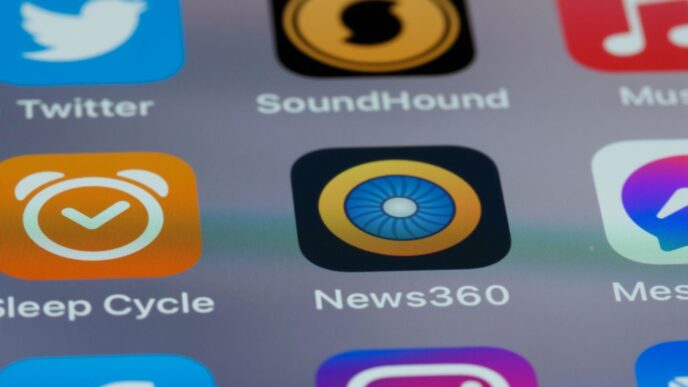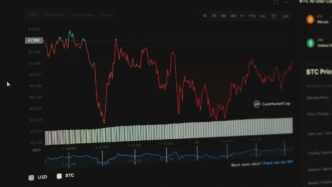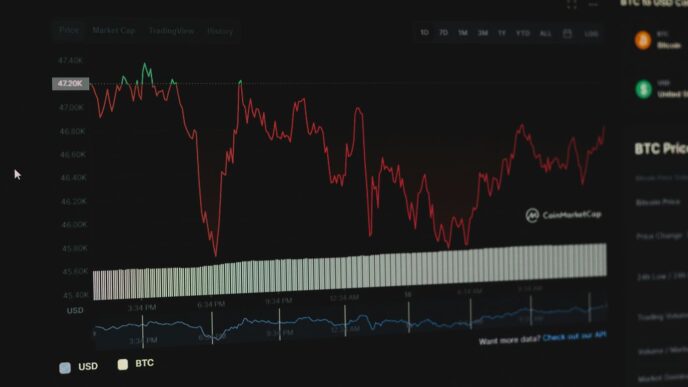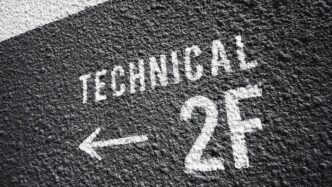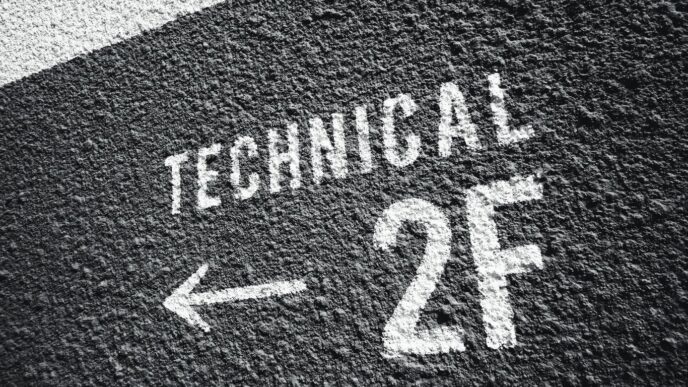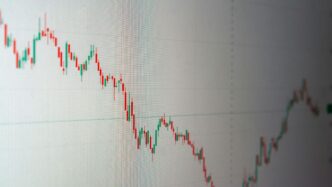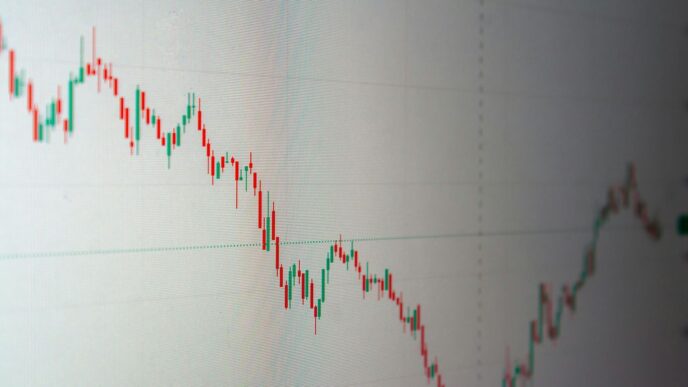Ever wondered how The Verge’s logo changed over the years? It’s more than just a pretty picture; it tells a story about the site itself. From its early days as a tech-focused blog to the big media brand it is now, the logo has seen some serious updates. Let’s take a look at how the Verge logo evolved and what those changes really mean.
Key Takeaways
- The Verge logo started with a sci-fi feel, aiming for a unique look.
- Over time, the logo was simplified for better use on different platforms, like phones and social media.
- The design team made changes to make the logo feel more welcoming to a wider audience, moving away from a niche look.
- A core idea behind the logo is the ‘interface’ concept, showing The Verge as a link between people and the future.
- While parts of the logo changed, key elements like the logomark were kept to maintain brand recognition and history.
The Verge Logo’s Foundational Years
The Original Wordmark: A Sci-Fi Dream
When The Verge first launched, its logo was a bold statement, a wordmark that felt like it jumped right off the screen of a futuristic movie. It was designed to capture that feeling of being on the cutting edge, a "sci-fi dream" as some put it. This initial design was all about setting a tone, a visual promise of what the site would cover: the latest in technology and its impact on our lives. It was a bit niche, maybe, but it definitely made an impression and helped establish a unique identity in the crowded digital space.
Establishing Brand Equity: The Iconic Logomark
Beyond the wordmark, The Verge also introduced a distinct logomark. This symbol, which has endured for years, became instantly recognizable. Its strength and bold design weren’t just for show; they were meant to represent the brand’s mission and vision from the start. This simple yet powerful shape managed to connect with audiences, embodying a sense of rebellion and forward-thinking that became synonymous with The Verge. It was a smart move, building a visual asset that carried significant brand weight and would continue to be a recognizable part of the identity for a long time.
Refining The Verge Logo for a New Era
Evolving the Wordmark: Practical and Design Adjustments
So, The Verge wasn’t just sitting still, right? As the site grew from a simple text-based thing into this whole multi-platform media brand, the original logo just wasn’t cutting it anymore. It needed to be able to show up everywhere, from a tiny social media icon to a big video stream. That’s where the practical stuff comes in. They needed a wordmark that was clearer when it was small, more flexible for animations, and gave them a solid base for any future sub-brands. It’s like trying to fit a big piece of furniture through a small doorway – sometimes you just gotta adjust the furniture.
On the design side, they made some smart moves. They ditched some of those fussy little serifs on the letters. Think of it like cleaning up a messy desk; it just makes everything look sharper and more modern, pointing towards what’s next. They also tweaked the spacing between the letters a bit, just enough to make it breathe better. But they were careful not to mess with the core shapes, like those custom bits in "TH" and "VE" – those are part of what makes The Verge, well, The Verge. It’s all about keeping that familiar feel while making it work for today’s digital world. It’s a bit like how Google updated its "G" icon with a smoother gradient to match its AI and Gemini branding.
Philosophical Shifts: Aligning Identity with Mission
Beyond just looking good and working better, the logo changes also reflected a bigger shift in what The Verge is all about. The original vibe, which some people called "sci-fi nerdiness," was cool, but it didn’t really speak to everyone they wanted to reach anymore. The brand was growing up, and the logo needed to show that. They wanted to move away from something that felt a bit too niche and embrace a broader audience. It’s about being inclusive, you know?
Here’s a breakdown of some of the thinking:
- Moving Beyond ‘Sci-Fi Nerdiness’: The old look leaned into a specific aesthetic that, while loved by some, wasn’t as welcoming to new readers. The goal was to tone down that direct nod while still respecting the logo’s roots.
- Embracing a Broader Audience: The updated design aims to be more universally understood and appealing, reflecting The Verge’s expanded reach and mission.
- Thoughtful Evolution: The team understood that growing means letting go of some old parts. A slightly changed wordmark is a quiet way of saying, "We’ve evolved, we’re still here, and we’re moving forward."
This wasn’t just about a facelift; it was about making sure the brand’s visual identity matched its evolving purpose and the diverse community it serves. It’s a statement that The Verge is thoughtful about its place in the world and how it presents itself.
The Verge Logo’s Journey Across Platforms

When The Verge first launched, it was primarily thought of as a website. You’d go there, read articles, watch videos, and that was pretty much it. But as technology evolved, so did how people consumed content. Suddenly, The Verge wasn’t just a destination; it was everywhere. Think about it: Facebook Instant Articles, Google AMP pages, newsletters, even those little thumbnails on YouTube. The logo needed to keep up.
This meant the logo had to be flexible, able to shrink down for a tiny mobile app icon or expand for a big splash on a homepage. It wasn’t just about looking good on a desktop screen anymore. The team had to design a system that could grow and change as fast as our audience interacted with the brand across all these different places. It’s a big shift from just having a logo on a single webpage.
From Text-Based Site to Multi-Platform Brand
Back in the day, a website’s logo was pretty straightforward. It lived on the site, maybe on some business cards. But The Verge’s mission expanded, and so did its presence. It went from being a place you visited to a brand that met you wherever you were. This shift meant the visual identity had to work everywhere, from the smallest notification to the largest banner ad. It’s like how Google updated its logo to be more adaptable across all its different products and services [59a9].
Ensuring Scalability: The Logo’s Mobile and Social Presence
Making sure the logo looked good everywhere was a huge part of the redesign. It needed to be clear and recognizable whether it was a tiny icon on your phone or part of a larger graphic. This involved a lot of tweaking:
- Simplifying shapes: Removing overly detailed elements that would get lost when shrunk down.
- Adjusting spacing: Making sure letters were spaced just right so they didn’t blur together on small screens.
- Creating variations: Developing different versions of the logo that could work best in various contexts, like a full wordmark for a website header and a simpler icon for social media profiles.
This focus on scalability means the logo can adapt, looking sharp whether it’s on a news feed or a dedicated app, reflecting the brand’s presence across the digital landscape.
The Verge Logo’s Inclusive Evolution
Moving Beyond ‘Sci-Fi Nerdiness’
When The Verge first launched, its logo had this cool, almost sci-fi vibe. Think neon dreams and futuristic tech. It definitely spoke to a certain crowd, the early adopters and tech enthusiasts. But as The Verge grew, and it really has grown a lot, it became clear that this look wasn’t really connecting with everyone. It felt a bit too niche, maybe even a little exclusionary, if we’re being honest. The goal shifted from just talking to the tech-heads to being a place for anyone interested in how technology shapes our world. So, the logo had to change too. It needed to shed that "sci-fi nerdiness" to welcome a broader audience. It’s like outgrowing a favorite t-shirt; it served its purpose, but it’s time for something that fits better now.
Embracing a Broader Audience
This shift wasn’t just about aesthetics; it was about the brand’s mission. The Verge wanted to be seen as a place that bridges the gap between the present and the future, for everyone. The original logo, with its specific design cues, was a bit too tied to a particular origin story. To truly represent a forward-thinking, inclusive brand, the visual identity needed to evolve. The updated logo aims to be more accessible, signaling that The Verge is a space for diverse perspectives and interests, not just a select group. It’s about making sure that whether you’re a seasoned coder or just curious about the latest smartphone, you feel like The Verge is for you. This means the design had to become more adaptable, more universal, while still holding onto that core identity that people recognize and trust. It’s a balancing act, for sure, keeping the essence while opening the doors wider.
The Verge Logo’s Design Philosophy
So, what’s the big idea behind The Verge’s look? It’s more than just a pretty picture; it’s about what the brand stands for. They’ve really thought about how the logo should feel and what it should say about them.
The ‘Interface’ Concept: Bridging Present and Future
One of the main ideas they played with is this concept of an "interface." Think of it as the space where things meet – like the line between what’s happening now and what’s coming next, or the connection between people and the tech that shapes our lives. The Verge sees itself as that meeting point, the place where you connect with the people and innovations that are building our future. It’s a way of saying they’re not just reporting on tech, but they’re right there at the edge of what’s new. This idea of being on the border, or the "verge," is pretty central to their whole identity.
Human Element in Branding
While the logo has roots in a kind of "sci-fi dream" vibe, they’ve worked to make it feel more welcoming. The goal wasn’t to ditch that cool, futuristic feel entirely, but to make sure it didn’t alienate people. They wanted a look that felt inclusive, not just for the hardcore tech fans, but for everyone. It’s about finding that balance between being forward-thinking and being relatable. They’ve moved away from things that might have felt a bit too niche or, let’s be honest, a bit nerdy, to something that feels more universal.
The ‘R’ as a Symbol of Forward Movement
Look closely at the wordmark, especially the letter ‘R’. You might notice a subtle angle to it. This isn’t just random; it’s meant to show movement. The Verge is all about being fast, about getting news and analysis out there ahead of the curve. That little tilt on the ‘R’ is a visual cue for that speed and progress. It’s a nod to their quick reporting and their drive to always be looking ahead. It’s a small detail, but it ties back to their mission of being at the forefront of what’s happening. You can see this commitment to being a leader in tech news across their coverage.
Key Revisions to The Verge Logo
So, The Verge decided it was time for a bit of a logo makeover. It wasn’t a complete overhaul, mind you, but more like a thoughtful tune-up to make sure the brand still felt fresh and relevant. They worked with a designer named Cory Schmitz, and the goal was to keep the old vibe while also looking ahead.
Removing Delicate Serifs for a Cleaner Look
One of the first things they did was ditch those tiny little serifs on the letters. You know, those little decorative strokes at the ends of the lines? They felt a bit old-fashioned, and the team wanted something that screamed ‘future’ more than ‘dusty library.’ So, they went for a cleaner, sans-serif look. It makes the wordmark feel more modern and straightforward, which fits with how technology itself is always moving forward.
Nuances in Letterspacing and Ligatures
They also played around with how the letters sit next to each other. It’s called kerning, and they just nudged the letters a tiny bit closer together. It might sound small, but it can make a big difference in how the whole word looks. Plus, they kept some of the cool custom bits, like how the ‘T’ and ‘H’ or the ‘V’ and ‘E’ connect. These little details are part of what makes The Verge’s logo unique and recognizable, so it made sense to keep them.
The Logomark’s Enduring Strength and New Colors
Now, the actual symbol part of the logo – the logomark – they decided to keep that pretty much as is. It’s been around for a while, and people know it. It’s strong and bold, and it represents what The Verge is all about. The main change here was giving it a fresh coat of paint, so to speak. They updated the colors to match the new look and feel of the brand. It’s like giving a classic car a new paint job; it still looks like the same car, but it feels new again.
So, What’s Next?
Looking back at how The Verge’s logo has changed, it’s pretty clear they’re not afraid to shake things up. From its early days to now, the logo has gone through some serious makeovers, each one trying to capture what The Verge is all about at that moment. It shows they’re always thinking about where they’re headed, trying to stay relevant and connect with more people. It’s like they’re saying, ‘We’ve learned a lot, we’ve grown, and we’re ready for whatever comes next.’ It’ll be interesting to see what the logo looks like down the road, but for now, this latest version feels like a solid step forward.




